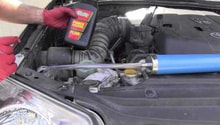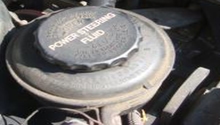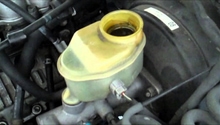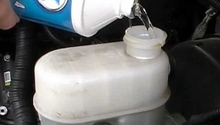Toyota Tacoma: How to Bleed Air Out of Power Steering Pump
Don't let worn-out power steering fluid damage your steering rack or pump. Read on to see how to flush and change dirty power steering fluid, with basic tools in your own driveway.
This article applies to the Toyota Tacoma (1996-2015).
Power steering fluid works very hard. The pump is running and constantly circulating pressurized fluid while you are driving. Although most manufacturers don't specify a change interval, the power steering fluid will look quite dirty after 10,000 miles and should certainly be changed every 20,000 miles. If you have replaced your power steering rack or pump and need to refill the system, or you just want to flush and change your dirty old fluid, the procedure is the same. The Tacoma uses approximately one quart of Dexron-3 ATF for power steering fluid. Buy two quarts to ensure you have enough for a good flush and refill.

Materials Needed
- Floor jack
- 2 Jack stands
- 2 wheel chocks
- Dexron-3 automatic transmission fluid; 2 quarts
- 4 feet of nylon hose; 3/4" ID (inner diameter)
- Rubber cap; 10mm ID
- Pliers
- Funnel
- Old cans or jars; 1 large and 1 small
- Rags
- Mechanic's gloves
Step 1 – Jack up and set front of truck on jack stands
- Park the Tacoma on a flat, level concrete surface.
- Set the parking brake and chock the rear wheels.
- Jack the front at the center lifting point, so that the front wheels are just off the ground.
- Set jack stands under the front frame rails.

Pro Tip
Never go under a vehicle unless you are certain that it is secure. Have an assistant or have a phone in your pocket.
Step 2 – Reservoir familiarization
The power steering pump is located at the top, front of the engine, with the reservoir sitting on top of it. The pressure line is metal and connects to the pump with a banjo bolt. The return hose is rubber and connects to the reservoir with a spring clamp.
- Place drip rags under the reservoir.
- Loosen the reservoir cap.
- Use pliers to squeeze the spring clamp and slide it down the return hose about 2".
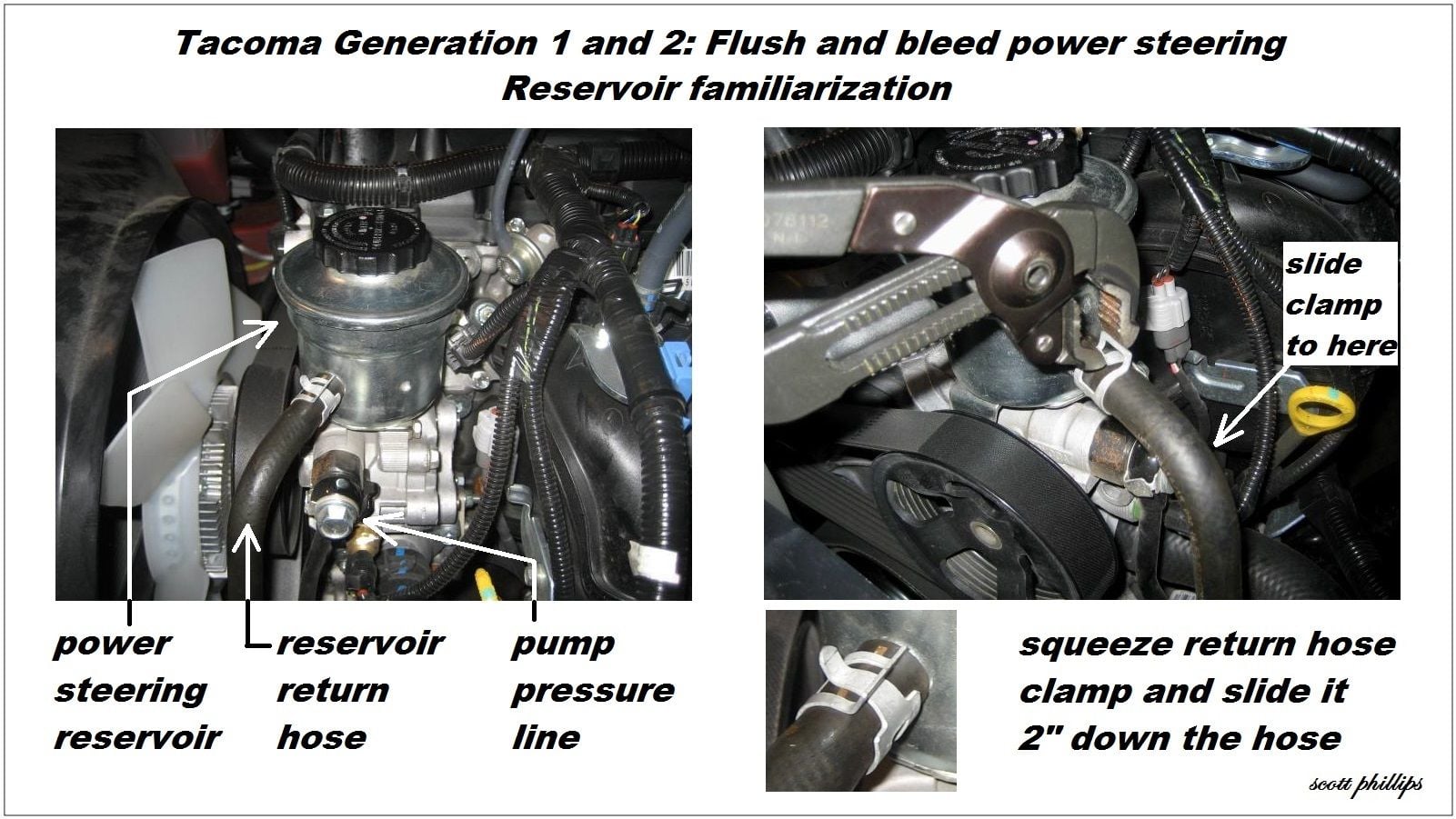
Step 3 – Remove the return hose
- With the spring clamp out of the way, grasp the return hose and twist it slightly to loosen it, then pull it off.
- Immediately place the small jar under the reservoir return nozzle to catch about six to eight ounces of old fluid.
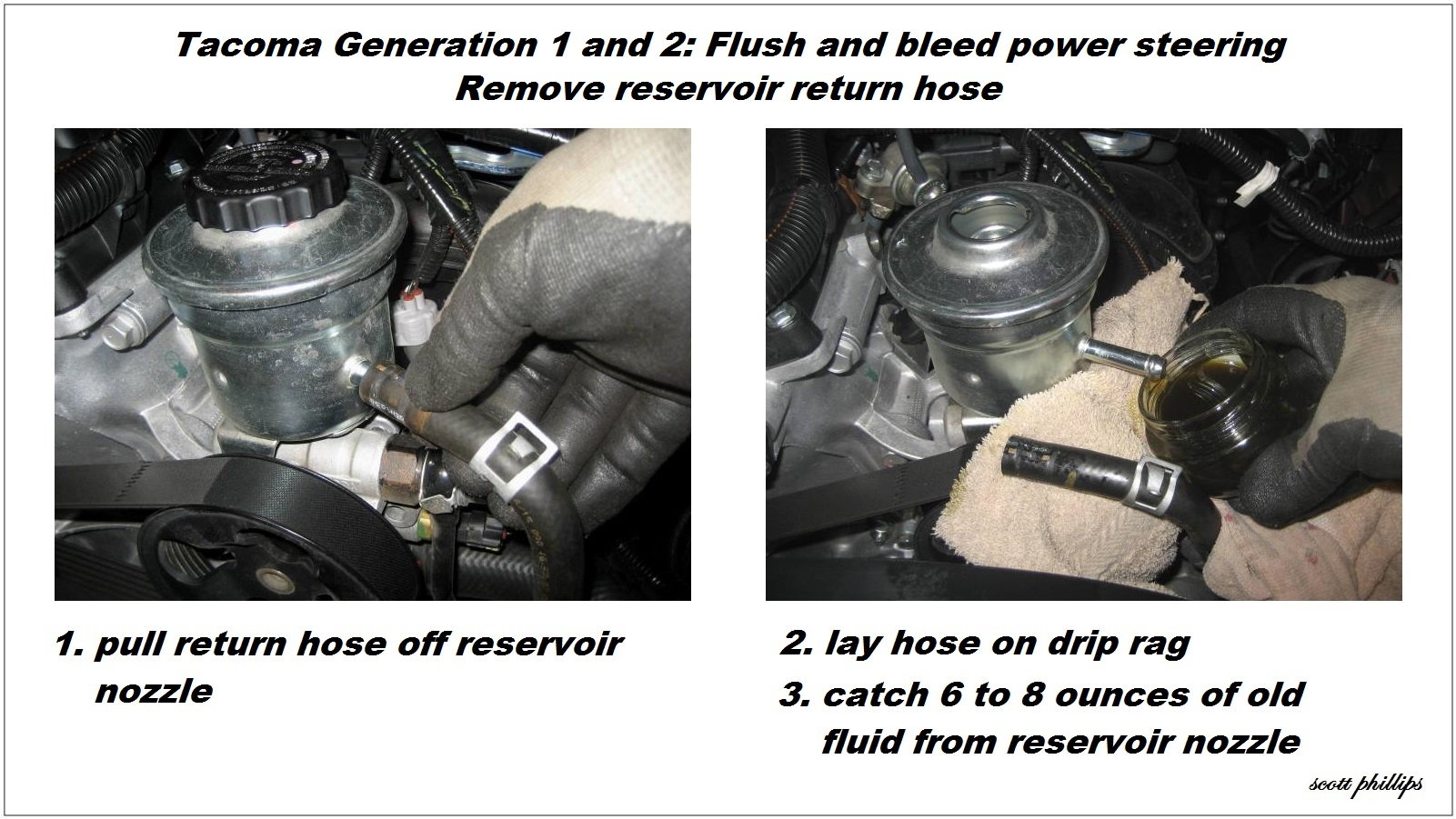
Step 4 – Setup the return hose drain
- Push the return hose tightly into the 3/4" nylon drain hose.
- Route the nylon hose out the bottom and into the large jar.
- Use the 10mm rubber cap to tightly cap-off the reservoir return nozzle.
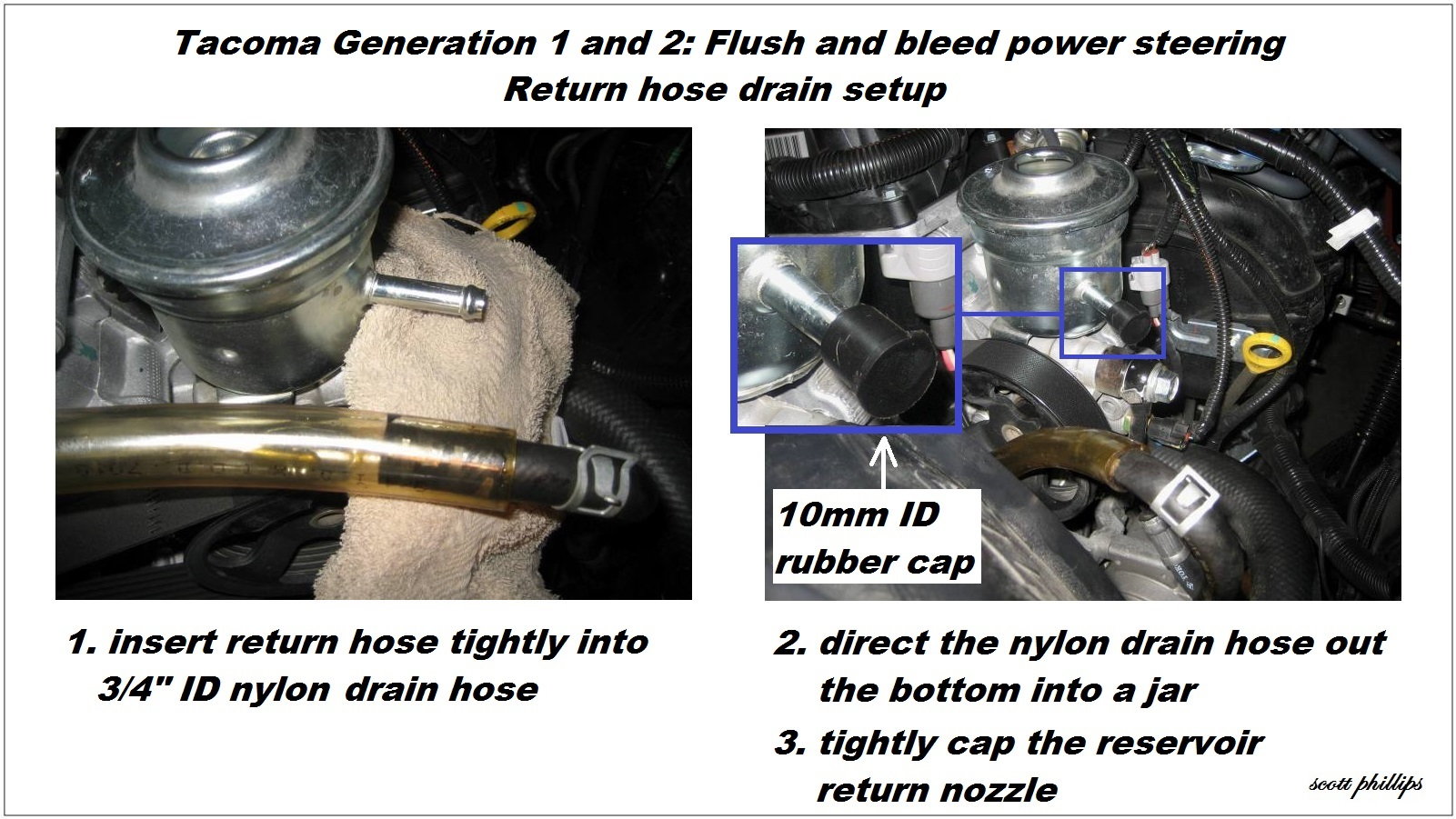
Step 5 – Fill the reservoir and flush
- Using the funnel, fill the reservoir with about 10 ounces of Dexron-3 ATF.
- Unlock the steering wheel, but do not start the engine.
- Slowly turn the steering wheel left and right, as described in Step 6.
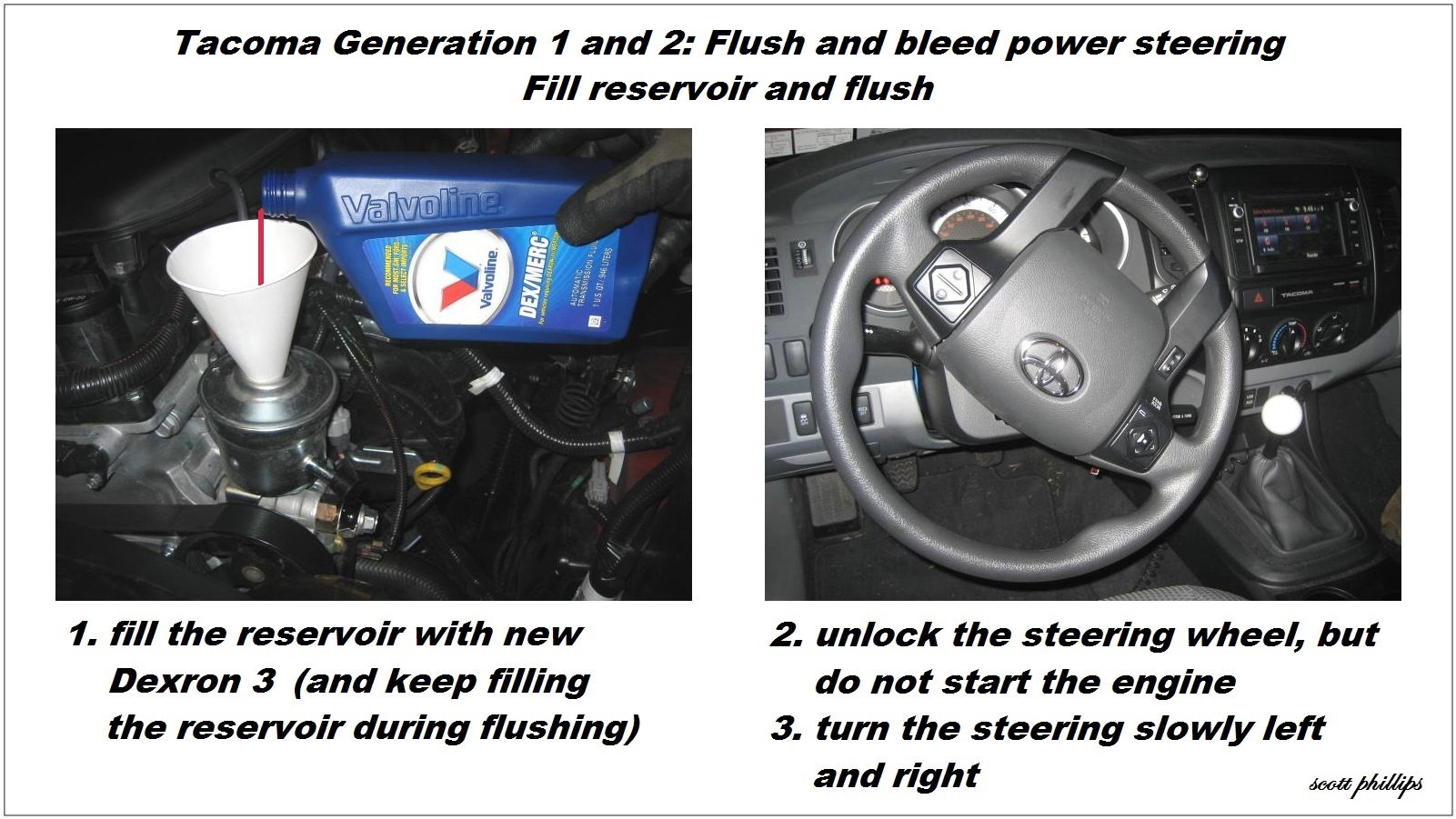
Pro Tip
ATF bottles with the side-spout are designed to pour smoothly. To use with no glugging and splashing, pour with the side-spout on top.
Step 6 – Flush until old fluid is drained
- Turn the steering wheel left and the rack will expel old fluid out the drain hose and into the jar.
- Turn the steering wheel right and the rack will draw new fluid in from the reservoir.
- Check and top-up the reservoir.
- Repeat 2 and 3.
- When new fluid runs from the drain hose, flushing is complete.
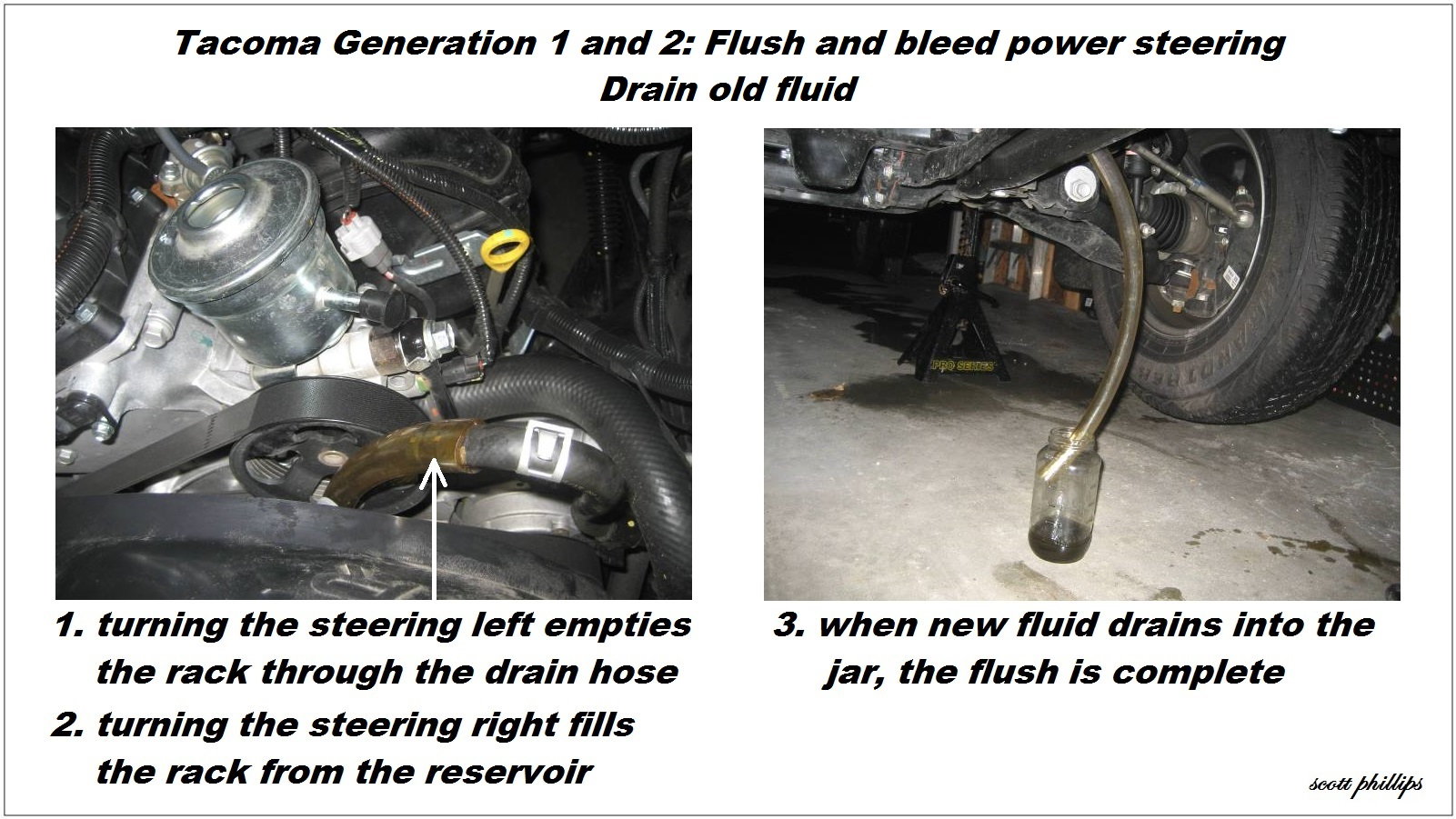
Step 7 – Reinstall the return hose
- Keep drip rags under the reservoir.
- Pull the return hose out of the nylon drain hose and hold it up, so it doesn't drip.
- Remove the rubber cap from the return nozzle and quickly reinstall the return hose on the reservoir.
- Use the pliers to squeeze the spring clamp and slide it into position on the return hose.
- Remove the drain hose and rubber cap and wipe up any drips.
Step 8 – Bleed the power steering
The power steering system is designed so that trapped air will enter the reservoir through the return hose and rise to the top, out of the system. Because the pump is below the reservoir, the pressure line will get air-free fluid only.
- Turn the steering wheel slowly left and the rack will expel fluid back to the reservoir. Any trapped air will bubble to the top.
- Turn the steering wheel slowly right and the rack will draw air-free fluid from the reservoir.
- Continue to turn the wheel about 20 times to ensure that all air is bled from the system.
- Top up the reservoir as needed, to bring the Dexron-3 fluid level to full COLD on the dipstick.
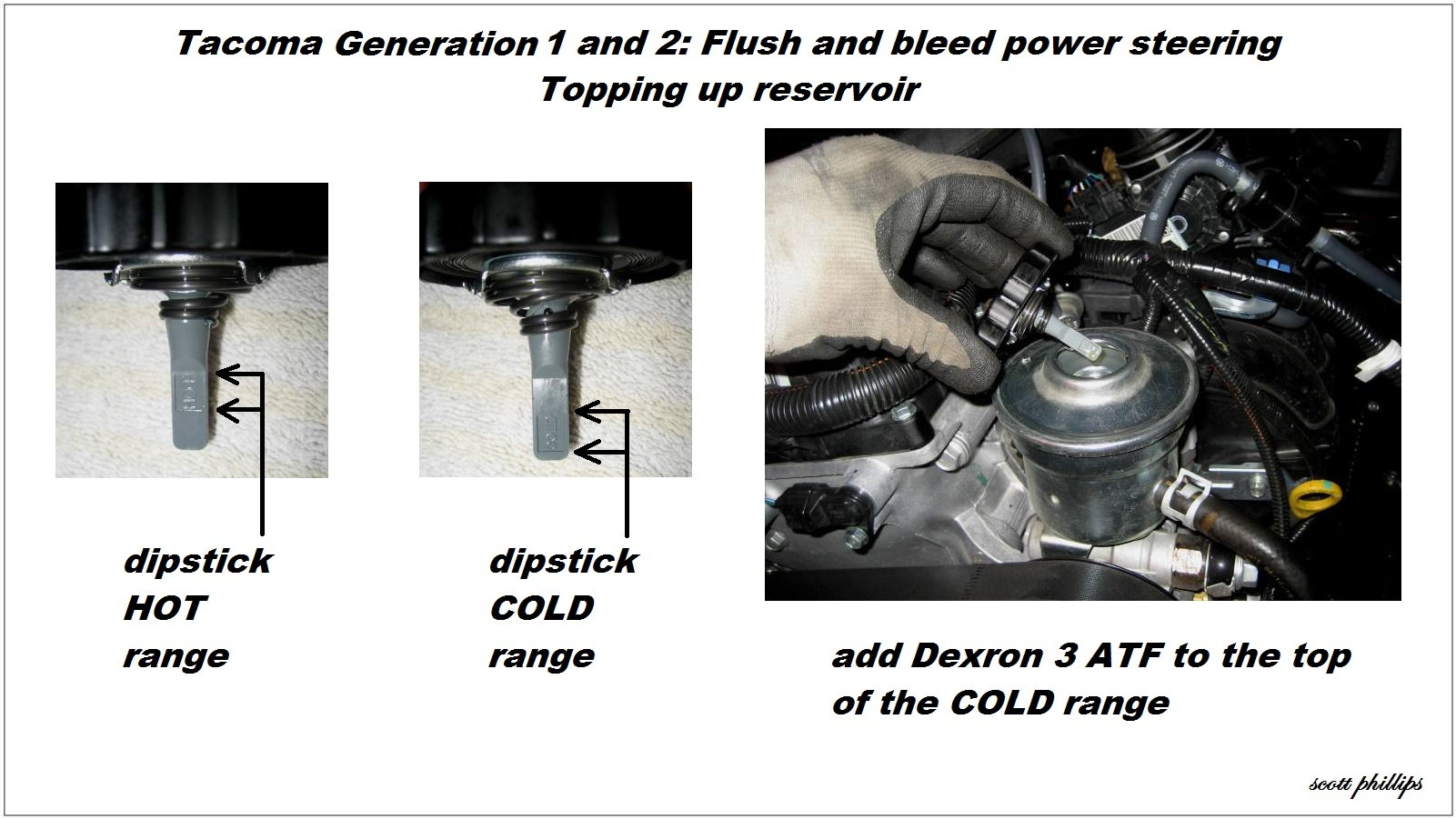
Step 9 – Check the pump
Run the engine and turn the steering wheel, while listening for chattering sounds from the power steering pump. Bleed again as needed before taking the truck down off jack stands.
Related Discussions
- Power Steering, Bleeding? - YotaTech.com
- Bleeding the Power Steering System? - YotaTech.com
- Power Steering Flush - yotaTech.com

